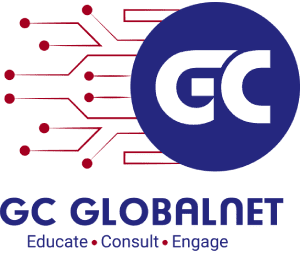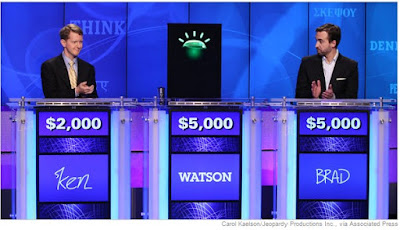Twitter Feed
Procurement in a Virtual Business World
Today, companies are undergoing a dramatic change in their environment and processes. Many groups these changes together as “Digital Transformation,” but that industry buzzword fails to describe the essential details…
Taking the Canadian Insurance Industry Digital
“Digital disruption isn’t just for hip start-ups. Incumbents can not only compete but actually lead radical industry change if they pay attention to the way their business model is shifting…
#DigitalTransformation Means Hybrid IT and Multipath
The cloud is ubiquitous in today’s business world. This operational model is changing both data center operations and application development processes across multiple domains. As the manager of data centers…
Wasabi Hot Innovations Tour: How “Hot Cloud Storage” Changes Everything!
Digital storage requirements are growing exponentially. Budgets simply can’t keep up and existing Federal Data Center Consolidation Initiative (FDCCI), “Cloud First” Policy, Federal IT Acquisition Reform Act (FITARA) and Modernizing…
(Lack of) Patch Management Highlighted in US Congress
According to the former Equifax CEO’s testimony to Congress, one of the primary causes of this now infamous data breach was the company’s failure to patch a critical vulnerability in…
Experience “The Big Pivot”
Graeme Thompson, SVP/CIO Informatica The Big Pivot Podcast explores Digital transformation and its effect on every business in every industry. In exploring the business benefits of data-driven transformation, it is…
Innovation At The Seams
by Kevin L. Jackson & Dez Blanchfield Today’s real business innovation is happening at the seams of industries. Moreover, after listening to this podcast between Sanjay Rishi, GM Global Cloud…
Digital Transformation & Intelligent Automation
By Kevin Jackson & Dez Blanchfield Digital Transformation often needs Intelligent Automation. This type of change is the focus of a recent “Pioneers of Possible” podcast. In discussion…
The Ascent of Object Storage
Over the past few years, the data storage market has changed radically. The traditional hierarchy of directories, sub-directories, and files referred to as file storage has given way to object…
The Deer Hunters: An Information Technology Lesson
by Kevin Jackson & Dez Blanchfield In episode four of the “Pioneers Of Possible” podcast series, Dez Blanchfield caught up with Max Michaels, General Manager, IBM Network Services in…
- Using highly automated and economic cloud infrastructure to deliver proactive and predictive monitoring and threat interception in cybersecurity;
- Leveraging cloud computing device independence to enable real-time social media analytics that coordinate delivery of context driven information and commercial offers across multiple marketing channels;
- Establishing connectivity across over 6.4 billion sensors so that analytics and cognitive computing programs can provide actionable insight from real-time and historic data; and
- Hybrid Cloud data architectures that use cognitive computing capabilities to maintain content traceability and lifecycle management to enable the auditable management of licenses, terms of use, and changes to third-party data.
Cognitive systems understand by interaction, reason by generating recommendations and hypotheses, and learn from human experts and data. Since they never stop learning they also never stop providing business value. With this blending of cloud infrastructure and cognitive applications, the impossible can suddenly become easy!
- Develop a cognitive strategy by deciding which of your products, services, processes and operations should be infused with cognition. Your strategy should include identifying your organizations data needs and picking the experts to train the cognitive system.
- Collect and curate the data that is most useful to driving your business model. This step will help in creating an organizational foundation of data and analytics.
- Use cloud services that are designed specifically for your industry vertical. Such services will incorporate the application programming interface (API) building blocks necessary to power your future cognitive products and services.
- Acquire hybrid cloud service broker expertise and develop a hybrid infrastructure transition plan that combines your current IT systems with private and/or public clouds. This combination will serve as a backbone of your cognitive business.
- Establish and build-in a data-centric security model from the start. This focus will give you the ability to secure every transaction, piece of data and interaction as cognitive systems make their way into the Internet-of-Things (IoT). Secure systems ensure trust in the entire system and ultimately, the organization’s reputation.
|
Industry
|
Cloud Computing
|
Cognitive Computing
|
|
Cyber security
|
Highly automated and economical infrastructure platforms that encompass the implementation and enforcement of “brutal standardization” – IaaS
|
Enables the advancement of operational cyber security is from threat detection via signature-based identification to proactive and predictive monitoring and threat interception powered by analyzing user behavior
|
|
Marketing
|
Ubiquitous access to compute, storage and networking services independent of device
|
Delivery of social media analytics that promise the coordinated delivery of context driven information and commercial offers across multiple channels to targeted individuals
|
|
Process Industries
|
Connectivity to over 6.4 billion sensors collecting and storing real-time data
|
Analytics and cognitive computing programs that provide actionable insight from real-time and historic data
|
|
All industry verticals
|
Transform from the delivery of labor hours and physical goods to the delivery of information and services (Uber, Air B&B, Travelocity, etc)
|
In the case of IBM Watson, the consumption and processing of billions of API calls per month across 80,000 programs developed by 500 companies in 36 countries (https://www.tomsitpro.com/articles/ibm-cloud-hyrid-storage-watson,1-3158.html)
|
|
Consulting / Analytics
|
Voice-driven command and control
|
Applications that understand natural language and generate personalized insights that learn with every user interaction
|
|
Consulting
|
Economic and secure collection, transport, processing and storage of massive amounts of structured and unstructured data
|
Ability to pull non-obvious insights out of massive amounts of multi-structured data through the discovery of patterns and relationships. This enables the economic use of dark data, described as “information assets that organizations collect, process and store in the course of their regular business activity, but generally fail to use for other purposes.”
|
|
Distribution / Publishing / Content Management
|
Hybrid Cloud data architectures that ensures that, when multiple data zones are in use, compute power is moved to the data, rather than compute workloads being moved in a way that could violate institutional policies, regulatory guidelines or governmental laws around data location.
|
Data Fabric technology that maintains the traceability and lifecycle of content enabling the auditable management of licenses, terms of use, and changes to third-party data.
|
|
Education / Research
|
Global SaaS/PaaS business models and platforms
|
Creation of Analytic Fabrics that combine and orchestrate different analytics engines that deliver an ability to create composite or cognitive insights across first-part and third-party data. This can also be used to combine natural language queries with structured data analytics.
|
|
Healthcare / Public Safety
|
Global SaaS/PaaS business models and platform
|
Cognitive Graphs that can represent entities, relationships, and attributes in a probabilistic way, not just a deterministic way, so that users can do inferencing and generate hypothesis. This also delivers an ability to normalize many different data types as well as learn from data over time. With this capability, when something changes somewhere in the graph that may affect something elsewhere in the graph, every specific change is recognized at every point it touches.
|
( This post was brought to you by IBM Global Technology Services. For more content like this, visit Point B and Beyond.)
( Thank you. If you enjoyed this article, get free updates by email or RSS – © Copyright Kevin L. Jackson 2015)
Cloud Computing
- CPUcoin Expands CPU/GPU Power Sharing with Cudo Ventures Enterprise Network Partnership
- CPUcoin Expands CPU/GPU Power Sharing with Cudo Ventures Enterprise Network Partnership
- Route1 Announces Q2 2019 Financial Results
- CPUcoin Expands CPU/GPU Power Sharing with Cudo Ventures Enterprise Network Partnership
- ChannelAdvisor to Present at the D.A. Davidson 18th Annual Technology Conference
Cybersecurity
- Route1 Announces Q2 2019 Financial Results
- FIRST US BANCSHARES, INC. DECLARES CASH DIVIDEND
- Business Continuity Management Planning Solution Market is Expected to Grow ~ US$ 1.6 Bn by the end of 2029 - PMR
- Atos delivers Quantum-Learning-as-a-Service to Xofia to enable artificial intelligence solutions
- New Ares IoT Botnet discovered on Android OS based Set-Top Boxes


